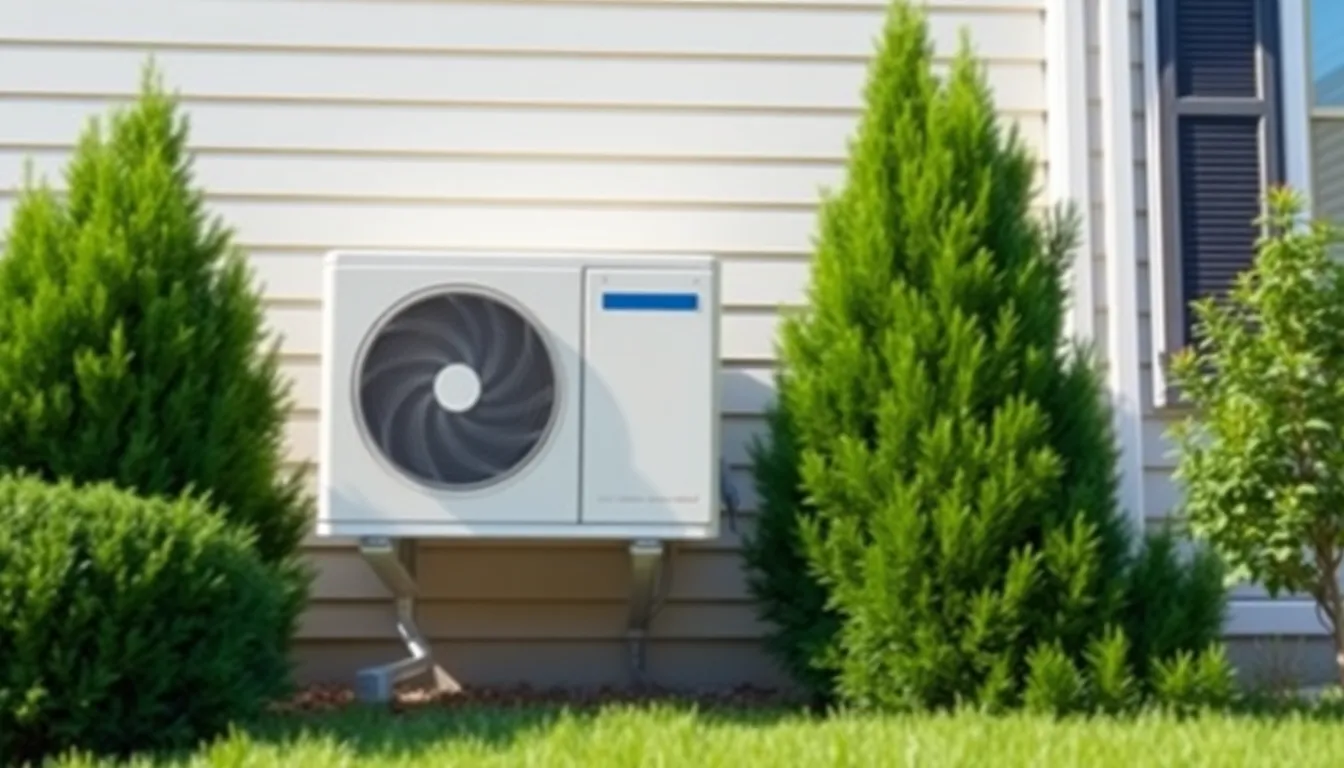When it comes to staying cool in the summer, choosing the right air conditioning unit can feel like a game of Goldilocks—too big and you’re wasting energy, too small and you’re sweating like a popsicle in the sun. Enter the 2.5 ton AC unit, the unsung hero of temperature control. But how do you know if it’s the right fit for your home?
Understanding the square footage that a 2.5 ton unit can efficiently cover is key to keeping your space comfortable without breaking the bank. With the right knowledge, you can avoid the pitfalls of overcooling or undercooling, ensuring your living room feels like a refreshing oasis instead of a sauna. Let’s dive into the numbers and discover how this unit can transform your home into a cool haven.
Table of Contents
ToggleUnderstanding 2.5 Ton AC Units
A 2.5 ton AC unit typically covers areas ranging from 1,000 to 1,500 square feet. Efficiency in cooling depends on various factors, including insulation, ceiling height, and local climate. Selecting the right unit size ensures optimal performance without wasting energy.
To achieve effective cooling, considerations about home layout play a crucial role. For instance, open floor plans may experience different cooling needs compared to segmented spaces. Factors influencing air distribution include the number of windows and sunlight exposure throughout the day.
Energy efficiency ratings provide additional insight into a unit’s performance. Units with higher SEER ratings indicate better energy savings over time. An efficient unit not only cools effectively but also reduces energy bills, benefiting homeowners financially.
Air conditioning professionals recommend consulting load calculations to determine the precise needs of a space. These calculations factor in insulation quality, the number of occupants, and appliances generating heat. Proper assessment leads to a more tailored cooling solution.
When evaluating options, understanding the impact of regional climate on unit performance becomes essential. Hot, humid areas may require different considerations than dry, arid climates. Knowledge of local temperature averages informs better decision-making before installation.
Ultimately, making informed choices regarding a 2.5 ton AC unit supports a comfortable indoor environment. Attention to square footage, efficiency ratings, and local climate fosters effective cooling solutions tailored to individual needs.
Ideal Square Footage for 2.5 Ton AC Units


A 2.5 ton AC unit effectively cools spaces between 1,000 and 1,500 square feet. Understanding the factors that impact this capacity ensures optimal performance.
Factors Affecting Square Footage
Insulation quality significantly influences cooling efficiency. High-quality insulation retains cool air, whereas poor insulation allows heat to enter. Ceiling height also plays a role; higher ceilings require more cooling power. Consideration of the home layout is essential; open floor plans often distribute air differently than confined spaces. The number of windows and their exposure can affect heat gain, further impacting square footage coverage. Equipment that generates heat, such as appliances or electronics, modifies cooling needs. Regular maintenance of the AC unit contributes to its efficiency, ensuring that it meets the cooling demands of the space effectively.
Climate Considerations
Geographic location greatly impacts how a 2.5 ton AC unit performs. Hot and humid climates necessitate higher cooling capacity to combat heat load. Conversely, dry climates may require less energy for effective cooling as moisture retention decreases. Local temperature variations should guide heating and cooling strategies; regions with extreme summer temperatures demand more powerful units. Seasonal weather patterns also inform usage frequency and duration of cooling systems. Understanding these climate factors helps adjust expectations for performance, ensuring comfort throughout the year. Tailoring the choice of AC unit to specific climate conditions optimizes indoor comfort.
Benefits of Choosing a 2.5 Ton AC Unit
A 2.5 ton AC unit provides significant cooling capacity for medium-sized spaces, covering 1,000 to 1,500 square feet. Enhanced comfort is a key benefit, as it efficiently handles varied indoor temperatures, ensuring a pleasant environment during hot months.
Energy efficiency stands out with this unit type, particularly when it holds a high SEER rating. This rating indicates better performance, leading to potential savings on utility bills throughout the cooling season.
Adjusting to diverse climates becomes seamless with a 2.5 ton AC unit. It accommodates hot and humid areas, which often require greater cooling capacity. Such adaptability ensures consistent indoor comfort regardless of external weather conditions.
In terms of installation, this unit aligns well with a range of home layouts. Open floor plans benefit from its ability to circulate air effectively, while segmented spaces also experience improved cooling coverage.
Regular maintenance plays a crucial role in maximizing efficiency. Routine filter changes and annual inspections enhance system performance, extending the operational lifespan of the unit.
Flexibility in using the unit presents another benefit. It works effectively alongside modern smart thermostats, allowing for customized temperature settings based on daily schedules.
Investment in a 2.5 ton AC unit often translates to long-term reliability. Homeowners appreciate the balance of upfront costs and ongoing savings, leading to a wise choice for both comfort and budget management.
Common Misconceptions
Many confuse tonnage with size when discussing AC units. Tonnage actually refers to cooling capacity, not the physical size of the unit itself.
Some believe a higher tonnage always means better cooling. An oversized unit can lead to short cycling, reducing efficiency and failing to dehumidify air properly.
It’s a common myth that a 2.5 ton unit is suitable for any space within its square footage range. Individual factors like insulation quality and layout significantly influence how well the unit performs in specific homes.
Others assume that energy efficiency ratings don’t matter. In reality, a high SEER rating often indicates lower operational costs over time.
There’s also a misconception that regular maintenance isn’t necessary. Without routine checks, a unit may lose efficiency and incur higher energy expenses.
Many think all climates require the same cooling strategy. Local climate impacts how much cooling capacity is necessary to maintain comfort levels.
People may believe they can install the unit themselves. Professional installation ensures correct sizing and setup, which optimizes performance and longevity.
Some homeowners expect immediate results from their unit upon installation. It often takes time for the space to cool down adequately, especially in extreme heat.
Lastly, there’s a notion that all window coverings have the same effect. In fact, effective window treatments can significantly reduce heat gain, improving unit efficiency.



